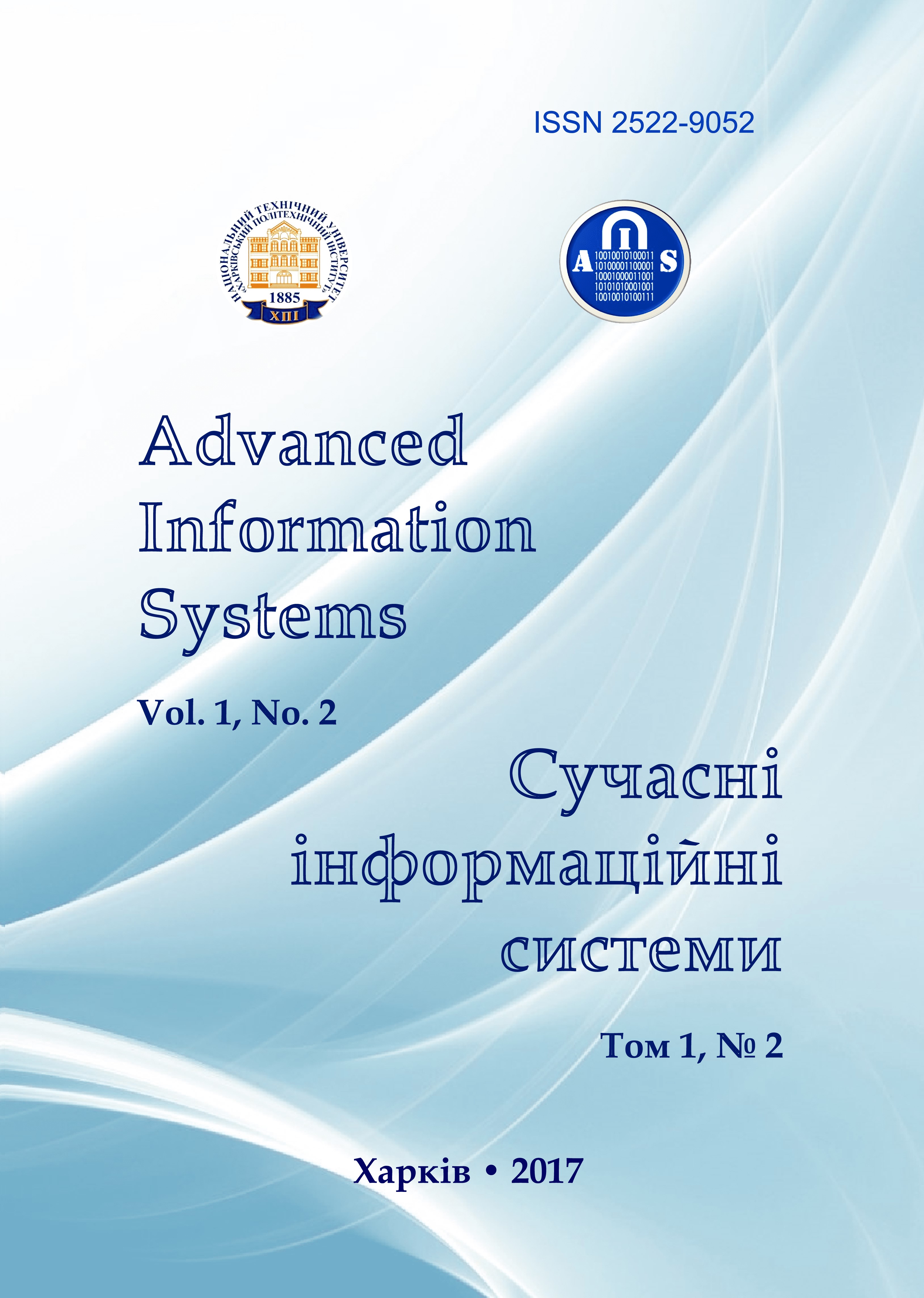Increase the aviation efficiency of UAVs using artificial neural networks
Main Article Content
Abstract
Purpose. It is known that the flight of the UAV is conducted by sensors that transmit the performance of the UAV and on the basis of this information is controlled on the UAV and give them the orders which are necessary to perform the task of flying UAV. and normal these faults occur during the flight of unmanned air vehicle (UAV), according to the concepts of aviation is a very critical situation that affects the completion of the mission. These faults are mainly due to failure in the sensors, which can be divided into. Flight Situation is about the flying situation of the aircraft, such as (heading, altitude, airspeed, and vertical speed and angle of attack sensors. And Flight Control Situation, this is about the flight control surfaces such as (rudder, aileron, and elevator deflection), pitch attitude, and roll attitude sensors. This paper presents an effective technique to ensure that the sensors can operate with high efficiency. Methods. Two different approaches are used in this work. The first approach is Neural Network (NN) based tool for the modeling, simulation and analysis of aircraft (SFDIA), sensors failure, detection, and identification and accommodation problem. The second approach is Neural Network trained with the (EMRAN) algorithms which is a set of conditions that decide how the (EMRAN) structure should be adapted to better suit the training data. Results. The results from the modeling process and analysis of aircraft sensors showed that the neural network based tool (SFDIA) and the (EMRAN) algorithms are able to show high-resolution results in the behavior of sensors and hence in the (UAV) behavior. Conclusions. The capabilities of (SFDIA) are a consequence of the extensive modularity of the whole simulation tool. It allows an easy change of unmanned air vehicle (UAV), dynamics and feedback control law as well as Neural Network (NN) estimators and (SFDIA) scheme.
Article Details
References
Stevens, B.L. and Lewis, F.L. (1987), Aircraft Control and Simulation, John Wiley & Sons, New York.
Kerr, T.H. (1982), “False Alarm and Correct Detection Probabilities over a Time Interval for Restricted Classes of Failure Detection Algorithms”, IEEE Transactions of information Theory, IT-28, No. 4, pp. 619-631.
Powell, M.J.D. (1987), “Radial Basis Function for Multivariable Interpolation: a Review”, Algorithms for approximation. J.C. Mason and M.G. Cox, Eds. Oxford U.K. Oxford Univ. Press, pp. 143-167.
Vemuri, A., Polycarpou, M. and Diakourtis, S. (1998), “Neural Network Based Fault Detection and Accommodation in Robotic Manipulators”, IEEE Transaction on Robotic sand Automation; Vol. 14, No. 2, pp. 342-348.
Napolitano, M.R.Y. and Seanor, B. (2000), “A fault tolerant flight control system for sensor and actuator failure using neural networks”, Aircraft Design, Vol. 3, pp. 103-128.
Polycarp, M. (1998), “On-Line Approximates for Nonlinear System Identification: A Unified Approach", Control and Dynamic Systems Series, Vol. 7, Neural Network Systems Techniques and Applications (Academic Press, January 1998).
Frank, P.M. (1987), "Fault diagnosis in dynamic systems using analytical and knowledge-based redundancy. A survey and some new results", Automatic, pp. 459-474.
Chow, E.Y. and Willsky, A.S. (1984), “Analytical redundancy and the design of robust detection systems”, IEEE Trans. Automat.Contr., Vol. 29, pp. 603-614.
Patton, R.J. Frank, P.M. and Clark, R.N. (1989), “Fault diagnosis in dynamic systems, theory and application,” London, Control Engineering Series, Prentice Hall.
Platt, J.C. (1991), “Resource Allocation Network for Function Interpolation”, Neural Computation, 2, pp. 213-225.
Sundararajan, Y.Li, N and Saratchandran, P. (2000), “Analysis of minimal radial basis function network algorithm for real time identification of nonlinear dynamic systems,” IEEE Contr. Theory and Application, Vol. 4, pp. 476-484.
Fravolini, M.L Campa, G.M., Napolitano and Song, Y. (2001), “Minima resource allocating networks for aircraft SFDIA” Advanced Intelligent Mechatronics, Vol. 2, pp. 1251-1256.
Frank, P.M. and Ding, X. (1997), “Survey of Robust Residual Generation and Evaluation Methods in Observer-Based Fault Detection Systems”, Journal of Process Control, Vol. 7, No 6, pp. 403-424.
Isermann, R. (1984), "Process fault detection based on modeling and estimation methods, Automatics, pp. 387-404.
Zhang, Q. and Zhang, Y. (1996), "A method for fault detection and isolation using neural Networks," IEEE International Conference on Neural Networks.
Cai, G., Lum, K.-Y., Chen, B.M. and Lee, T.H. (2010), “A Brief Overview on Miniature Fixed-Wing Unmanned Aerial Vehicles,” Proc. 8th IEEE International Conf. on Control and Automation, Xiamen, Chinapp, pp. 285-290.
Alessandri, A. and Parisini, T. (1998), "Neural state estimators for direct model-based fault Diagnosis", Proceedings of the American Control Conference.
MATLAB Help Documentation (2011), Math works, available at: www.mathworks.com (last accessed May 11, 2017)..
Rauw, M.O. (1993), A Simulink Environment for Flight Dynamics and Control analysis - Application to the DHC-2 “Beaver” (MSc-thesis, Delft University of Technology, Faculty of Aerospace Engineering, Delft, the Netherlands, 1993).
Esposito, F., Accardo, D., Moccia, A., Ciniglio, U., Corraro and Garbarino, L. (2007), “Real-Time Simulation and Data Fusion of Navigation Sensors for Autonomous Aerial Vehicles”, Advances and Innovations in Systems, Computing Sciences and Software Engineering; Elleithy, K., Ed.; Springer: Dordrecht, The Netherlands, pp. 127-136.
Nasuti, F.E. and Napolitano, M.R. (2000), "A learning approach to the SFDIA problem using radial basis function networks" Proceedings of the IEEE International Symposium on Intelligent Control.
Alessandri, A., Baglietto, M. and Parisini, T. (1998), "Robust model-based fault diagnosis using neural nonlinear estimators," Proceedings of the 37th IEEE Conference on Decision and Control.
Alessandri, A. and Parisini, T. (1998), "Neural state estimators for direct model-based fault Diagnosis", Proceedings of the American Control Conference.
Li, Yan, Sundararajan, N. and Saratchandran, P. (2000), “Dynamically Structured Radial basis Function Neural Networks for robust aircraft flight control”, Proc. American Control Conference, Chicago, pp. 3501-3505.
Junge, T.F. and Unbehauen, H. (1996), “Off-Line Identification of Nonlinear Systems Using Structurally Adaptive Radial Basis Function Networks”, (1982), Proceedings of the 35th Conference on Decision and Control, Kobe, Japan, pp. 943-948.
Junge, T.F. and Unbeaten, H. (1997), “On-Line Identification of Nonlinear Time-Variant Systems Using Structurally Adaptive Radial Basis Function Networks”, American Control Conference, pp. 1037-1041, Albuquerque, New Mexico.
